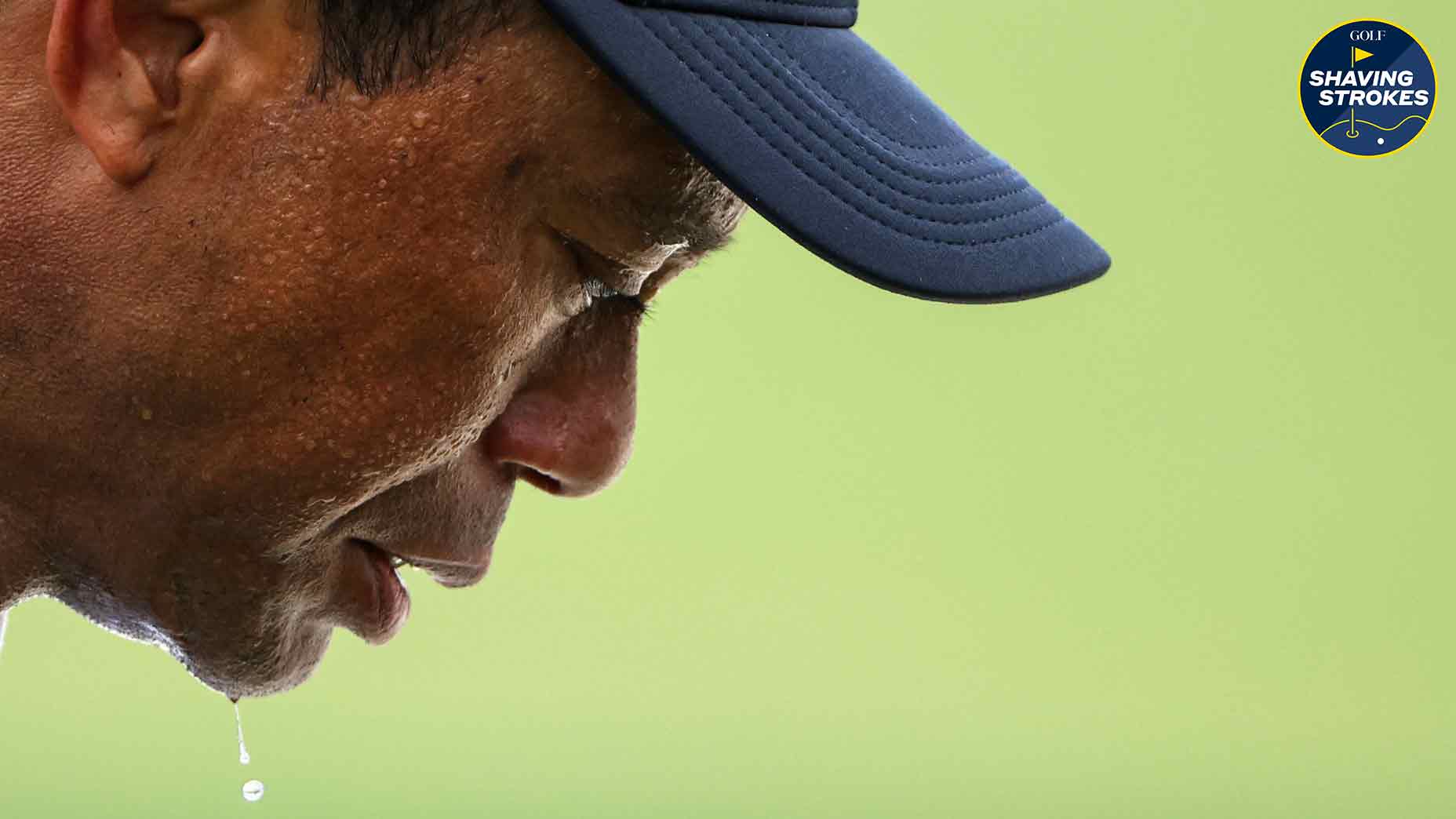How tough is Royal Liverpool? This pro’s excellent Twitter analysis reveals all

How tough is Royal Liverpool? Michael Kim spilled details - and it doesn't look fun.
Getty Images
As Royal Liverpool Golf Club readies to host the Open Championship, there’s a common theme that will play out throughout the tournament: The course will play tough.
That’s true for many links courses, with unruly weather conditions, quirky design elements and deep pot bunkers making it hard for players to get comfortable.
As we’ve seen in previous Open Championships, one hole might bring blue skies and little wind, with a wide, firm driving zone off the tee, with the next bringing blistering crosswinds, rain and a tight fairway.
That’s part of the beauty of playing links golf — it requires skill and adaptation with each and every shot.
But unless you’re actually on the ground and experiencing the conditions in real life, it’s hard for golf fans to truly understand the challenge of courses like Royal Liverpool.
To help give some perspective, PGA Tour player Michael Kim took to Twitter to provide a behind-the-scenes look at the back nine.
For one, Kim says Royal Liverpool is playing long. This means players may be hitting more drivers off the tee than is customary — which could be a dangerous proposition if conditions change from day to day.
Like every Open Championship, the tournament will get into the minds of players, testing their course management and club-selection skills.
My thoughts on the back 9 at Royal Liverpool:
— Michael S. Kim (@Mike_kim714) July 17, 2023
– It’s not firm like 06 or 14 YET. If it stays like this, we are not going to be hitting irons off most tees like tiger and Rory did. Fairways are green from all the rain and lots of holes (back nine) are in to the wind. You’re… pic.twitter.com/S4oYDcg0DW
“It’s not firm like 6 or 14 yet,” Kim wrote. “If it stays like this, we are not going to be hitting irons off most tees like Tiger and Rory did. Fairways are green from all the rain and lots of holes (back nine) are into the wind. You’re hitting lots of drivers and it’s playing long. Very well could change by Sunday though.”
Here are some other details that Kim calls out.
Adapting to the wind’s direction
Kim said playing in the same direction as the wind for nine holes may feel awkward after doing the opposite on the previous nine. This means players will need to adjust their swings and shot shapes to avoid trouble.
“Draws preferable, or you need to be able to aim way left for a cut,” he said. “I can see why 2014 Rory did well with his preferred draws back then. Not too different to Wells Fargo and US open tee shots wise I think.
“It is interesting playing mostly the same direction of wind for an entire 9, I can see it being awkward since you play with a right to left wind for 2.5 hrs on the front nine (swing is going to adjust as you play with the same wind) and then gonna have to play complete opposite wind on the back.”
No 17’s difficulty
Every hole at Royal Liverpool presents a challenge, but Kim calls out the new 17th, a short par 3, as being one of the hardest, saying players must be nearly perfect in where they land the ball to avoid rolling off the green into trouble. But he welcomes the challenge.
“[The] 17 par 3 is no joke. 150 (yards) but wind will be primarily into it, and it’s a TINY green with runoffs on every side leading to BAD bunkers. Short tough par 3s are amazing.”
The tight fairway on No. 18
What I like about Kim detailing Royal Liverpool’s course is that he humanizes himself. Sure, he’s a pro golfer who can go low on any given day, but the Open Championship’s course is going to keep him (and other players) on their toes.
He provides a glimpse into his game plan for No. 18, which he says has a narrow fairway, but may offer some TIO (Temporary Immovable Obstructions) relief.
“[On] 18, there’s OB really tight to the fairway on the ride side. OB extends all the way to the green, and it’s no longer a short par 5. Reachable, but with at least a 3iron for me.
“18 green: You’re gonna see a lot of potential TIO relief, but usually the Open designates a bad spot for the drop, which means it won’t be as egregious as PGA TOUR drops.”
Bunker grooves
Finally, Kim highlighted something that may come into play (but some golfers often overlook during a round): The width of the rake lines in the bunkers at Royal Liverpool.
Another thing about Liverpool… these bunkers have really wide teeth rakes… might be tough to see with this video but the ball really rolls down to the crevice. It’s not plugged but def not a good lie ESPECIALLY if you’re in a fairway bunker. Auto 60 degree pitch out. They might… pic.twitter.com/4nTFXUpG1P
— Michael S. Kim (@Mike_kim714) July 17, 2023
As the tweet above shows, these types of rake grooves impact the way the ball lies in the sand. So instead of having a decent lie, the ball will be more prone to filter into a rut — which could wreak havoc on recovery shots.
Kim said using a 60-degree just to escape the sand may be the most sensible option.
“Another thing about Liverpool… these bunkers have really wide teeth rakes. Might be tough to see with this video, but the ball really rolls down to the crevice. It’s not plugged, but definitely not a good lie, ESPECIALLY if you’re in a fairway bunker. Auto 60-degree pitch out. They might change rakes, but it’s something to note.” (For a more in depth look at how difficult the bunkers are at Royal Liverpool, check out the sneaky reason why they’ll give players fits this week.)
Good luck out there, fellas.















